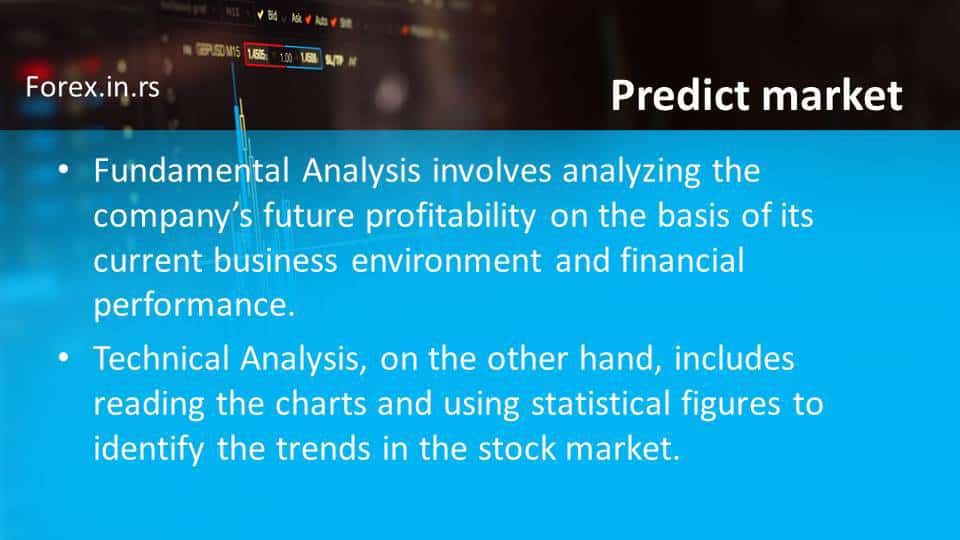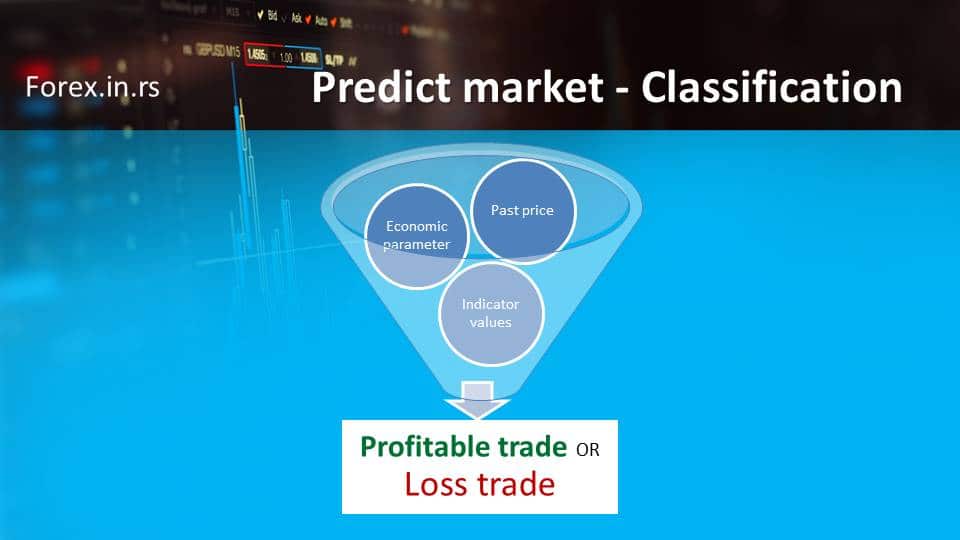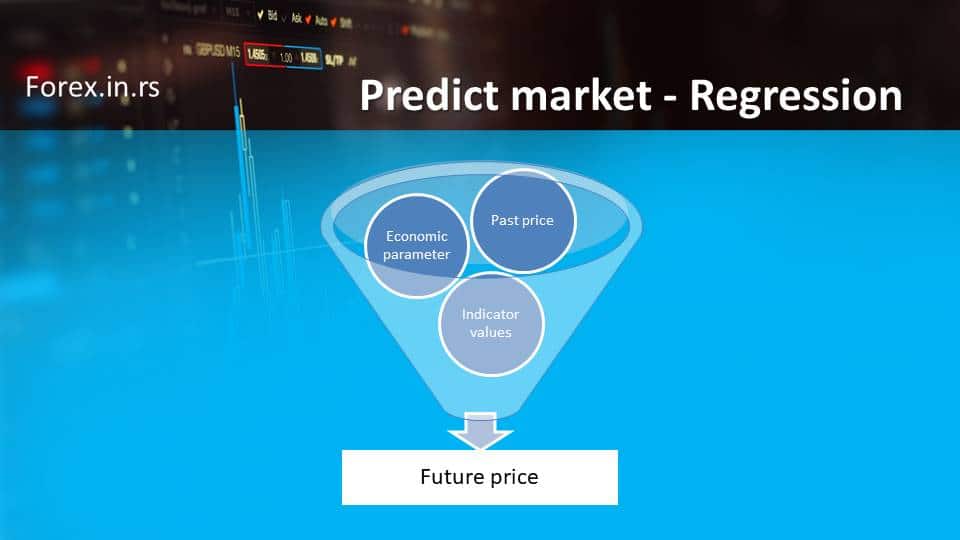Table of Contents
Traders worldwide constantly seek methods to predict future price movements in financial markets accurately. This pursuit involves combining strategies, including technical and fundamental analysis, scrutinizing market trends, and company health. The goal is to gain insights that provide an edge in forecasting prices, enabling informed decision-making for buying or selling securities. While no method guarantees absolute accuracy, the art and science of price prediction remain central to the trading world’s ongoing challenge.
Can You Predict Stocks and Forex Market Prices?
I can not predict the market price. Efficient market nobody can predict. But I or you – we can make an observation, opinion, strategy – assumption. But I believe that the market is inefficient sometimes, and then we traders can take the opportunity.
Forex price prediction represents that history may repeat itself in predictable patterns. Forex price prediction is based on price level analysis and building models (regression and classification models ) based on price history data technical and fundamental indicators.
Traders need to look for patterns and analyze essential price levels to predict the forex movement in foreign exchange rates using past market data.
When traders want to predict the forex or stock market, they can only create some models (using statistics to predict outcomes); when you create a set of rules for forex trading, you create the rule-based trading model. Traders can try to make predictive modeling, test observations, and validate opinions.
Still, in the end, they always figure out that the market is a very complicated mathematical problem that is hard to solve. This is the best characteristic of the market – strong liquidity, a lot of players, and the fact that it is almost impossible to predict the following outcome.
Why is that efficient market and “random walk” good?
The answer is that a genuinely efficient market eliminates the possibility of beating the market because any information available to any trader is already incorporated into the market price.
Have you noticed that you have been wondering whether you can predict stocks and the forex market? In terms of stock market prediction, this entails determining the value of a company’s stock within the context of a future timeframe or some other type of financial asset traded via an exchange. When a prediction about a stock or forex currency pair’s future price turns out to be successful, this could result in a trader’s high-profit level.
The efficient market hypothesis tends to suggest that prices are responsible for reflecting all information available in conjunction with all changes in pricing that are not linked to new data, which are therefore deemed as not predictable.
Others may hold a disagreeing point of view about this case. Those who favor the point of view about such a case are also realized as implementing a broad spectrum of approaches and technologies that supposedly enable them to access price information regarding the future to hope to achieve large sums of profits.
The Hypothesis of Efficient Markets and the Link to the Random Walk
It is noted that the hypothesis of efficient markets puts forth the assumption that prices are an element of rational information and expectations. It also considers newly produced information concerning a company’s prospects that usually reflects the present price context. This implies that all information readily available to the public concerning a company, which is noted as taking into account the history of the pricing, would genuinely be provided in reflecting the stock’s current pricing.
Therefore, it is understood that the changes in the price do indeed contribute to making an impact on the provision of new data, general changes that happen in the market, and movements of randomness regarding the value that reflects the present data set. Burton Malkiel is reputed to have written a powerful piece called A Random Walk Down Wall Street, published in 1973.
He declared that it was impossible to make accurate predictions about pricing by considering only the pricing history. This led to Malkiet’s claim that prices are better directed under a statistical process. He labeled this as the random walk, meaning that each day’s deviations away from the center position’s value are classified as random.
This leads to the rationalization that they cannot be predicted. Malkiel then concluded that the net portfolio was more hindered than helped when someone granted payment to financial service providers to make predictions concerning the market. The application of several empirical tests tends to indicate that the theory has a wide application since most portfolios under the management of professional stock predictors tend not to outperform the average return of the market after applying the manager’s fees.
Though the reality is that many financial academics tend to hold a favorable perspective toward the hypothesis of an efficient market, the critics of this hypothesis provide indications of scenarios where the reality of the experience of the market was not the same as what the hypothesis implies in terms of the prediction of unpredictability.
It is noted that an enormous industry has sprung up that proposes the idea that some analysts are better at making predictions than others. Paradoxically, this is considered an impossible feat when applying the hypothesis of efficient markets if the stock prediction industry did not provide the essence of something that customers thought to be beneficial. It is further realized that a highly notorious investor who had achieved much success, such as Buffet, claimed that the evidence of the efficient market hypothesis was false when he presented a speech at Columbia University.
Intrinsic Value
Intrinsic value means that something has real value. This is the value that a company is perceived to have. This value can be calculated. It considers the elements that are both tangible and intangible during the process of conducting the fundamental analysis. It is also a common practice to refer to the intrinsic value as the fundamental value.
This value is applied to compare with the company’s market value and address if the company has undergone undervaluation in its place on the stock market. When calculating the intrinsic value, the investor will consider the business’s quantitative elements in conjunction with the business’s qualitative elements. Typically, the intrinsic value undergoes calculation via the provision of the sum of the discounted future income yielded via the assets to derive the value at the current time.
Methods of Prediction

Predicting methods are placed in three broad classifications, noted as frequently overlapping. Thus, these methodologies are recognized as fundamental analysis, technical analysis, and technological methods.
Fundamental Analysis and Market Prediction
Fundamental analysis evaluates a security’s intrinsic value or forex economic data by examining related economic, financial, and other qualitative and quantitative factors. This approach involves analyzing the overall economy, industry conditions, and the financial health and management of the specific company, aiming to determine whether a security is overvalued or undervalued.
Fundamental analysts are interested in a company that engages in underlying the s of its merit. They evaluate the company’s past performance and the credibility of the accounts that the company possesses. Several performance ratings are created to help the fundamental analyst assess its validity, such as using the P/E ratio. Warren Buffet is genuinely a truly famous analyst analysis.
Technical Market Prediction prediction
Technical analysis is a method used in finance to evaluate investments and identify trading opportunities by analyzing statistical trends gathered from trading activity, such as price movement and volume. Unlike fundamental analysis, which focuses on a company’s financials and industry conditions, technical analysis relies on patterns in price charts and other market indicators to predict future price movements.
Technical analysts are not interested in the fundamental elements of a codetermine determining the outpricing of a stock founded primarily on the pricing history trends, which is regarded as a form of time-series broad tips. A broad spectrum of patterns is applied, such as the head and shoulders. It is expected it is common to use a cup and saucer. In conjunction with the usage of patterns, there is also the usage of techniques—for example, one such technique is the exponential moving average.
Also, oscillators use oscillators, levels of support, momentum, and volume indicators. Currently, there is widespread use of candlesticks—Japanese merchants likely created merchants. Technical analysis tends to be applied in short-term and long-term strategies. With this being the case, this type of analysis is more prevalent in commodities and forex markets when traders concentrate on the movements of prices in the short term.
This analysis often applies the critical of some fundamental assumptions. The first assumption is that all noteworthy components concerning a company are reflected in the stock price. The other assumption is that the price moves according to the trends. Finally, another assumption indicates that the pricing history usually experiences repetitions from the market’s psychology.
Machine learning as a market prediction tool
As a result of the inception of computers, the prediction of the stock market and forex has shifted into the realm of machine learning.

In machine learning, we have features (economic parameters, technical indicators, price values, etc.) and target variables (close price loss). Using s, we create a model to predict the target variable.
f(Industrial production index, RSI, Volume, B. Bands, Price1, Price2, Price3, etc.) = Close Price
The most prevalent technique today applies the usage of artificial neural networks in association with genetic algorithms. Artificial neural networks can be considered mathematical elements of approximators. The most prominent form of this in predicting the stock market is the feedforward network usage of the backward propagation algorithm in terms of errors to update the network. Such networks are often addressed as backward propagation networks. Another artificial neural network better suited for predicting stocks is the recurrent neural network using time-delay neural networks to derive the best possible earnings. In my experience, it simplifies.

In my experience, simple regression models are significantly better than deep models. Simple trading models are usually as good as complicated machine learning models in the trading industry; we will have more articles on this subject in the future.
We aim to find an exciting market inefficiency pattern and trade at that moment. It is hard but possible.
























